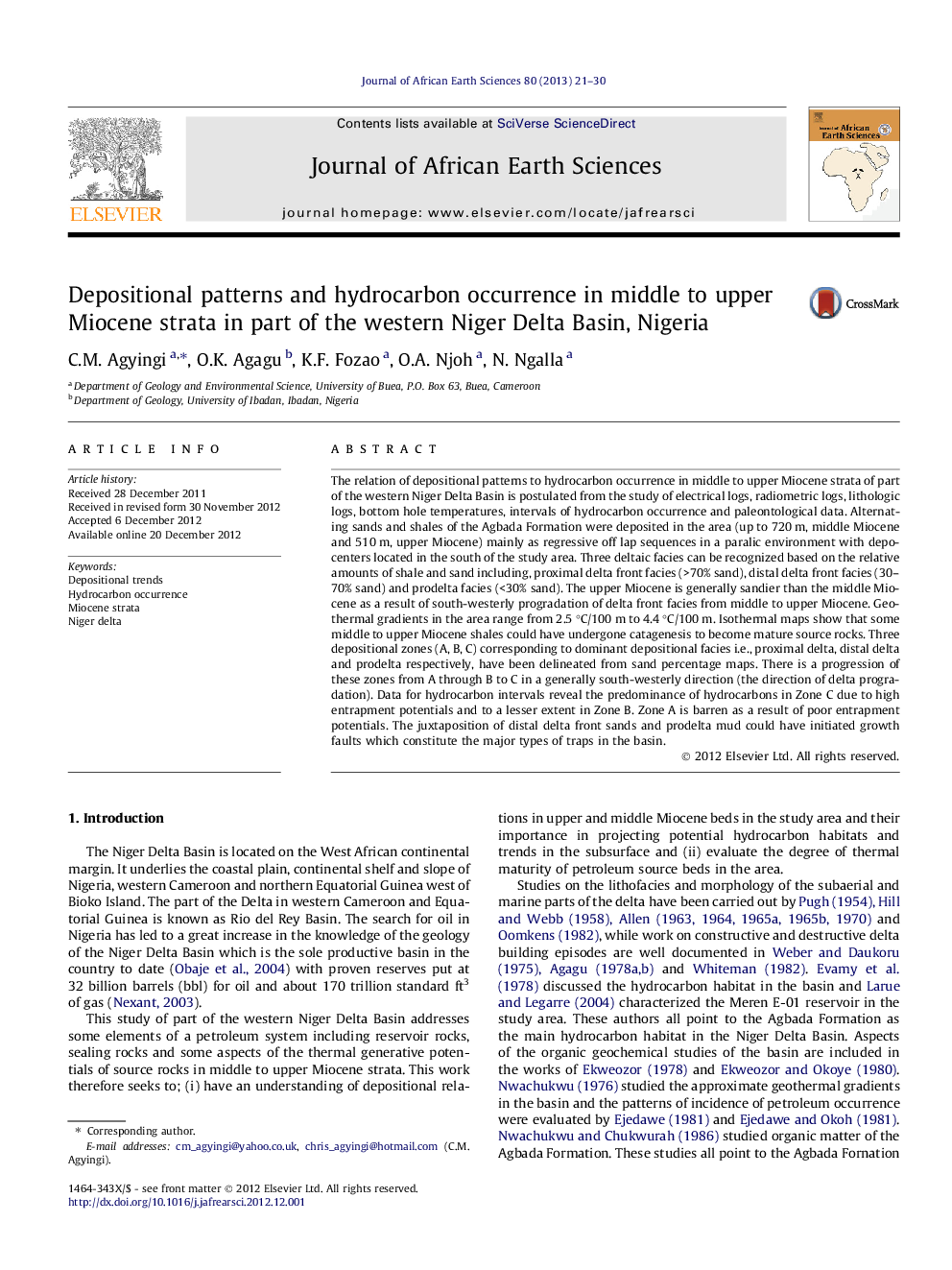| کد مقاله | کد نشریه | سال انتشار | مقاله انگلیسی | نسخه تمام متن |
|---|---|---|---|---|
| 4728978 | 1640226 | 2013 | 10 صفحه PDF | دانلود رایگان |
The relation of depositional patterns to hydrocarbon occurrence in middle to upper Miocene strata of part of the western Niger Delta Basin is postulated from the study of electrical logs, radiometric logs, lithologic logs, bottom hole temperatures, intervals of hydrocarbon occurrence and paleontological data. Alternating sands and shales of the Agbada Formation were deposited in the area (up to 720 m, middle Miocene and 510 m, upper Miocene) mainly as regressive off lap sequences in a paralic environment with depo-centers located in the south of the study area. Three deltaic facies can be recognized based on the relative amounts of shale and sand including, proximal delta front facies (>70% sand), distal delta front facies (30–70% sand) and prodelta facies (<30% sand). The upper Miocene is generally sandier than the middle Miocene as a result of south-westerly progradation of delta front facies from middle to upper Miocene. Geothermal gradients in the area range from 2.5 °C/100 m to 4.4 °C/100 m. Isothermal maps show that some middle to upper Miocene shales could have undergone catagenesis to become mature source rocks. Three depositional zones (A, B, C) corresponding to dominant depositional facies i.e., proximal delta, distal delta and prodelta respectively, have been delineated from sand percentage maps. There is a progression of these zones from A through B to C in a generally south-westerly direction (the direction of delta progradation). Data for hydrocarbon intervals reveal the predominance of hydrocarbons in Zone C due to high entrapment potentials and to a lesser extent in Zone B. Zone A is barren as a result of poor entrapment potentials. The juxtaposition of distal delta front sands and prodelta mud could have initiated growth faults which constitute the major types of traps in the basin.
► Facies analysis is an important tool in petroleum exploration.
► Geothermal analysis reveals presence of mature source rocks.
► Potential hydrocarbon habitats; delineated from sediment trends and resultant facies.
► Incidence of prodelta mud and delta front sands define potential hydrocarbon habitats.
Journal: Journal of African Earth Sciences - Volume 80, April 2013, Pages 21–30
